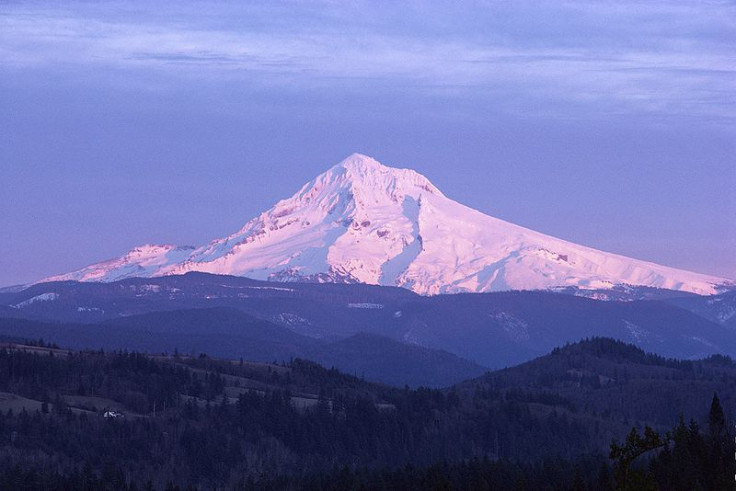US: Magma in Oregon's Mount Hood 'Can Melt and Erupt Within Months'

The magma stored inside Oregon's Mount Hood volcano could melt and erupt in the space of just a few months, despite being in a near-solid state for thousands of years, according to a new research.
Published in the journal Nature, researchers found the volcano could liquefy and erupt if the temperature of the rock rose to over 750C, which could happen if magma from deep within the Earth's crust rose to the surface.
If melted, the solidified magma, which sits around four kilometres beneath the surface of Mount Hood, would change consistency making it much more mobile and able to produce an eruption.
The researchers, from Oregon State University, said this heating process was the cause of the last two eruptions at Mount Hood, which took place about 220 years and 1,500 years ago.
Lead author Adam Kent and his team looked at what temperature the magma resides in the crust as this will influence the types of eruptions that could occur.
Hotter magma from deeper underground can mix with the cooler magma stored higher up, which can then be transported to the surface to produce an eruption.
"A big glob kind of plops out the top, but in the case of Mount Hood – it doesn't blow the mountain to pieces."
Lead author Adam Kent
However, Kent said that while the volcano could produce an eruption within months, it would not be violent because rather than exploding, magma tends to ooze out of the top. Previous research has shown mixing of two magma sources can trigger an eruption, but it also constrains its violence.
"What happens when they mix is what happens when you squeeze a tube of toothpaste in the middle," he said. "A big glob kind of plops out the top, but in the case of Mount Hood – it doesn't blow the mountain to pieces."
Researchers were able to establish the age and growth rate of the solid magma inside Mount Hood by looking at its crystals, and found it has been in "cold storage" for thousands of years.
"The magma has been stored beneath Mount Hood for at least 20,000 years – and probably more like 100,000 years. And during the time it's been there, it's been in cold storage – like the peanut butter in the fridge – a minimum of 88% of the time, and likely more than 99% of the time.
"What is encouraging from another standpoint is that modern technology should be able to detect when magma is beginning to liquefy, or mobilise," Kent said.
"That may give us warning of a potential eruption. Monitoring gases, utilising seismic waves and studying ground deformation through GPS are a few of the techniques that could tell us that things are warming."
© Copyright IBTimes 2025. All rights reserved.






















